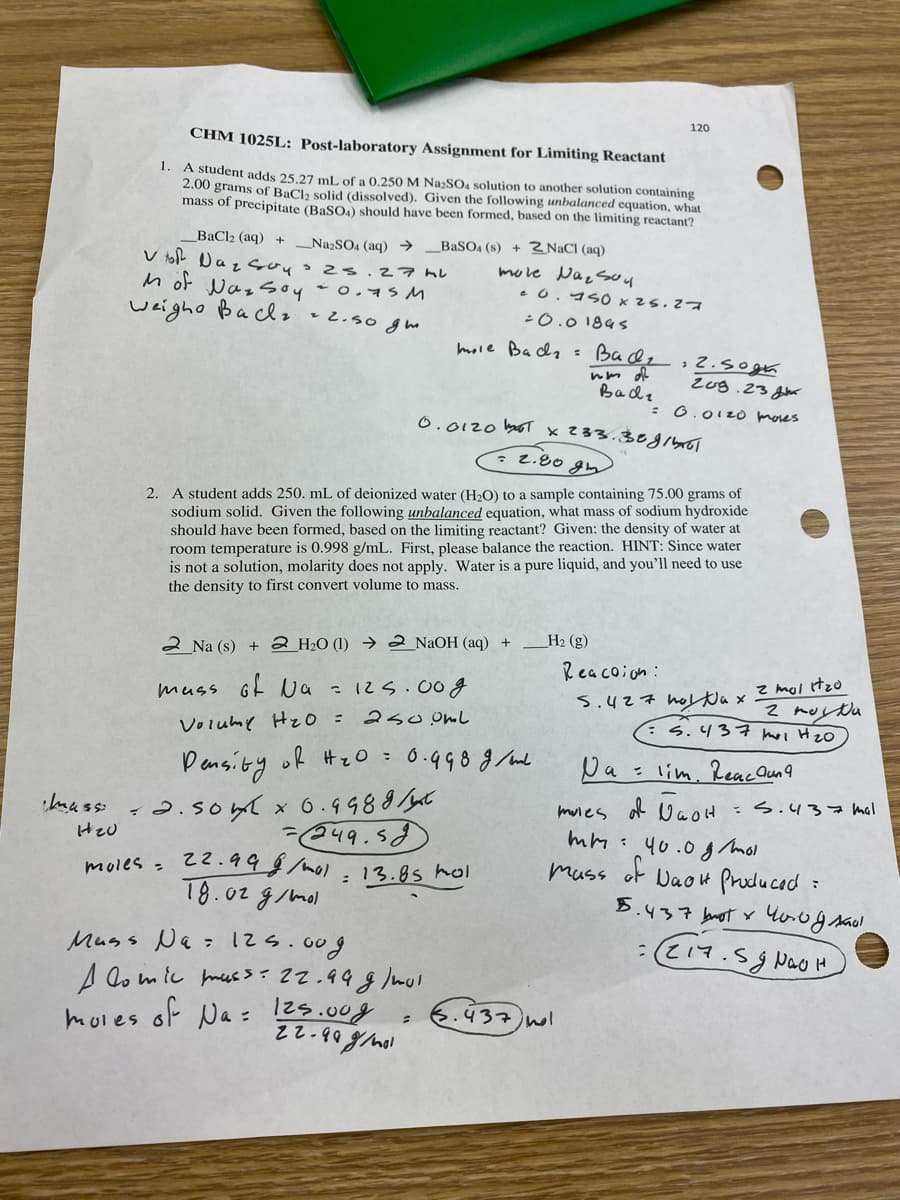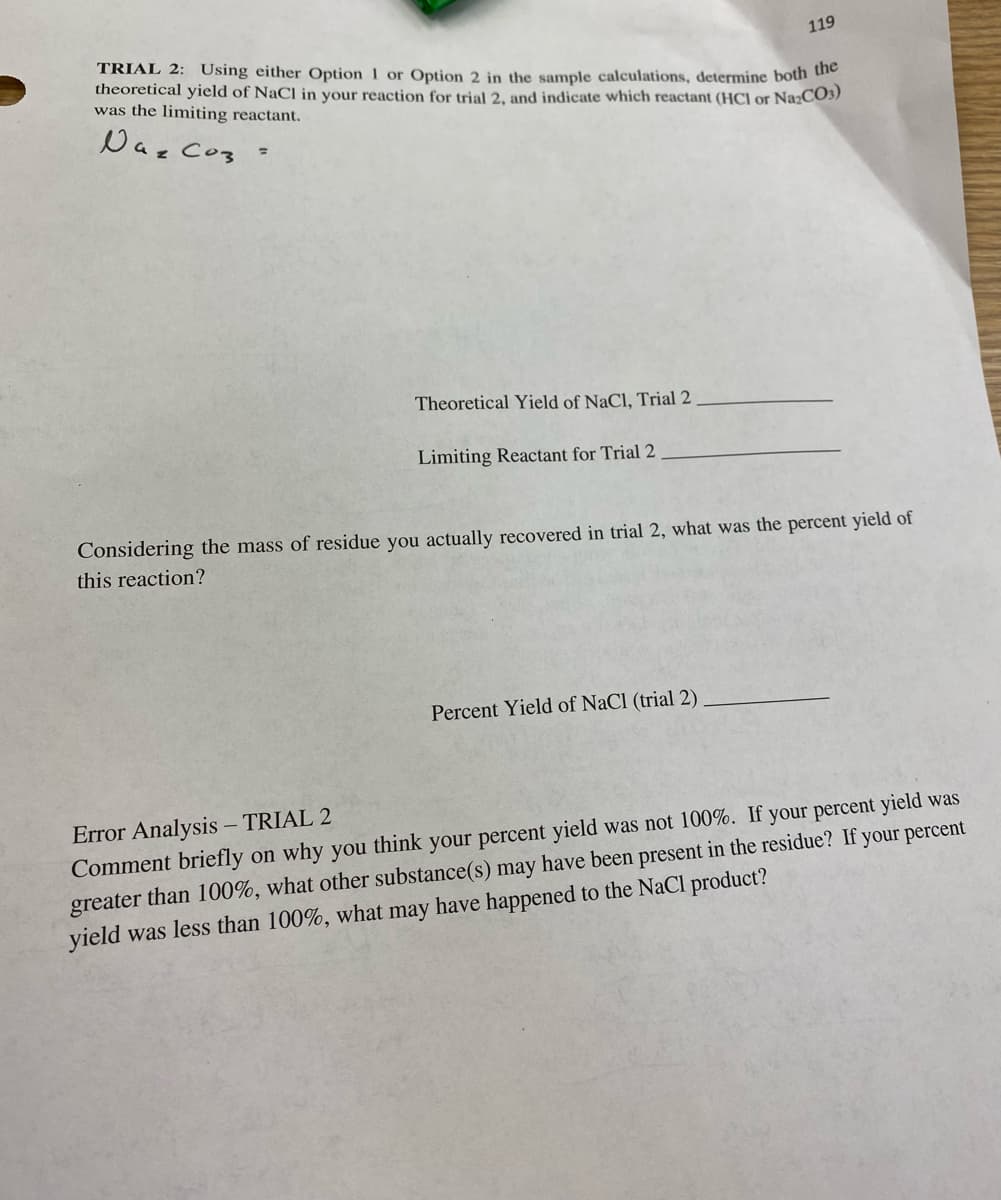Ignment for Limiting Reactant 1. A student adds 25.27 mL of a 0.250 M Na;SO, solution to another solution containing 2.00 grams of BaClh solid (dissolved). Given the following unbalanced equation, what mass of precipitate (BasO,) should have been formed, based on the limiting reactant? BaCla (ag)
Ignment for Limiting Reactant 1. A student adds 25.27 mL of a 0.250 M Na;SO, solution to another solution containing 2.00 grams of BaClh solid (dissolved). Given the following unbalanced equation, what mass of precipitate (BasO,) should have been formed, based on the limiting reactant? BaCla (ag)
Chemistry
10th Edition
ISBN:9781305957404
Author:Steven S. Zumdahl, Susan A. Zumdahl, Donald J. DeCoste
Publisher:Steven S. Zumdahl, Susan A. Zumdahl, Donald J. DeCoste
Chapter13: Chemical Equilibrium
Section: Chapter Questions
Problem 128IP: The hydrocarbon naphthalene was frequently used in mothballs until recently, when it was discovered...
Related questions
Question
Please Help

Transcribed Image Text:120
CHM 1025L: Post-laboratory Assignment for Limiting Reactant
1.
A student adds 25.27 ml. of a 0.250 M Na;SO4 solution to another solution containing
2.00 grams of BaCla solid (dissolved). Given the following unbalanced equation, what
mass of precipitate (BaSO) should have been formed, based on the limiting reactant?
BaCl2 (aq) + _Na2SO4 (aq) →
_BaSO4 (s) + NACI (aq)
v toll Daz soys s.27 hb
n of Nazsoy
weigho Baclz 2.so gm
muve Nazsoy
e 0.150 × 2s.2a
0.75 M
-0.0184s
hole Bacla :
Bad
> 2.5ogn
Badz
: 0.012o mores
6.0120 boT x Z33.30egibrot
2.80 gy
2. A student adds 250. mL of deionized water (H2O) to a sample containing 75.00 grams of
sodium solid. Given the following unbalanced equation, what mass of sodium hydroxide
should have been formed, based on the limiting reactant? Given: the density of water at
room temperature is 0.998 g/mL. First, please balance the reaction. HINT: Since water
is not a solution, molarity does not apply. Water is a pure liquid, and you’ll need to use
the density to first convert volume to mass.
_H2 (g)
2 Na (s) + 2 H2O (1) → 2 NAOH (aq) +
Reacoion:
z mol itzo
muss Gf Na 125.0og
aso omL
5.427 heレtax
:s.437 moi Hzo
Volume HzO :
Density of HzO :
6.998 g mne
Da- lim. Reac Quna
:S.437 mal
५9.58)
moles = 22.99$/mol.13.8s hol
T8.02 g/mol
mules at NaoH
mm: 40.0gmol
muss of Daot prouluced :
5.437 bnot x 4ougsaol
:Cマ.5g pa円
Muss Ne - 12s.00g
A lomic mus 3:22.49g Imul
moles of Na = 2s.00g
6.437)nol

Transcribed Image Text:119
TRIAL 2: Using either Option 1 or Option 2 in the sample calculations, determine both uhe
theoretical yield of NaCl in your reaction for trial 2, and indicate which reactant (HCI or NazCO3)
was the limiting reactant.
Dae Cos
Theoretical Yield of NaCl, Trial 2
Limiting Reactant for Trial 2
Considering the mass of residue you actually recovered in trial 2, what was the percent yield of
this reaction?
Percent Yield of NaCl (trial 2)
Error Analysis - TRIAL 2
Comment briefly on why you think your percent yield was not 100%. If your percent yield was
greater than 100%, what other substance(s) may have been present in the residue? If your percent
yield was less than 100%, what may have happened to the NaCl product?
Expert Solution
This question has been solved!
Explore an expertly crafted, step-by-step solution for a thorough understanding of key concepts.
Step by step
Solved in 3 steps with 3 images

Knowledge Booster
Learn more about
Need a deep-dive on the concept behind this application? Look no further. Learn more about this topic, chemistry and related others by exploring similar questions and additional content below.Recommended textbooks for you

Chemistry
Chemistry
ISBN:
9781305957404
Author:
Steven S. Zumdahl, Susan A. Zumdahl, Donald J. DeCoste
Publisher:
Cengage Learning

Chemistry: An Atoms First Approach
Chemistry
ISBN:
9781305079243
Author:
Steven S. Zumdahl, Susan A. Zumdahl
Publisher:
Cengage Learning


Chemistry
Chemistry
ISBN:
9781305957404
Author:
Steven S. Zumdahl, Susan A. Zumdahl, Donald J. DeCoste
Publisher:
Cengage Learning

Chemistry: An Atoms First Approach
Chemistry
ISBN:
9781305079243
Author:
Steven S. Zumdahl, Susan A. Zumdahl
Publisher:
Cengage Learning


Chemistry & Chemical Reactivity
Chemistry
ISBN:
9781337399074
Author:
John C. Kotz, Paul M. Treichel, John Townsend, David Treichel
Publisher:
Cengage Learning

Chemistry & Chemical Reactivity
Chemistry
ISBN:
9781133949640
Author:
John C. Kotz, Paul M. Treichel, John Townsend, David Treichel
Publisher:
Cengage Learning

Chemistry for Engineering Students
Chemistry
ISBN:
9781337398909
Author:
Lawrence S. Brown, Tom Holme
Publisher:
Cengage Learning